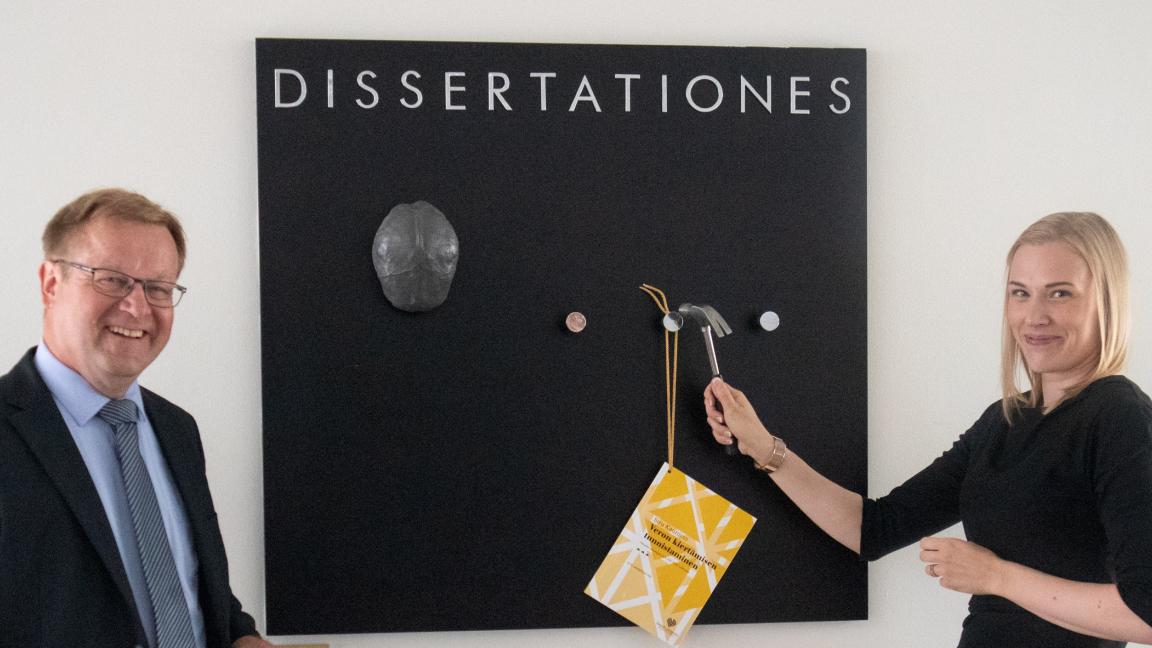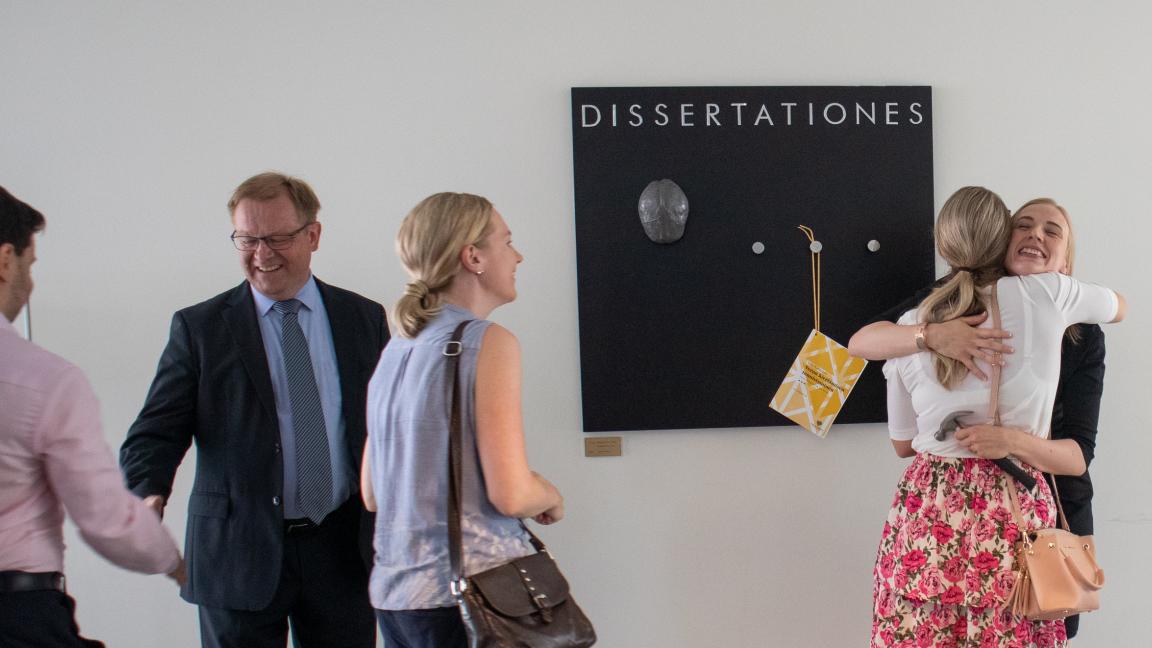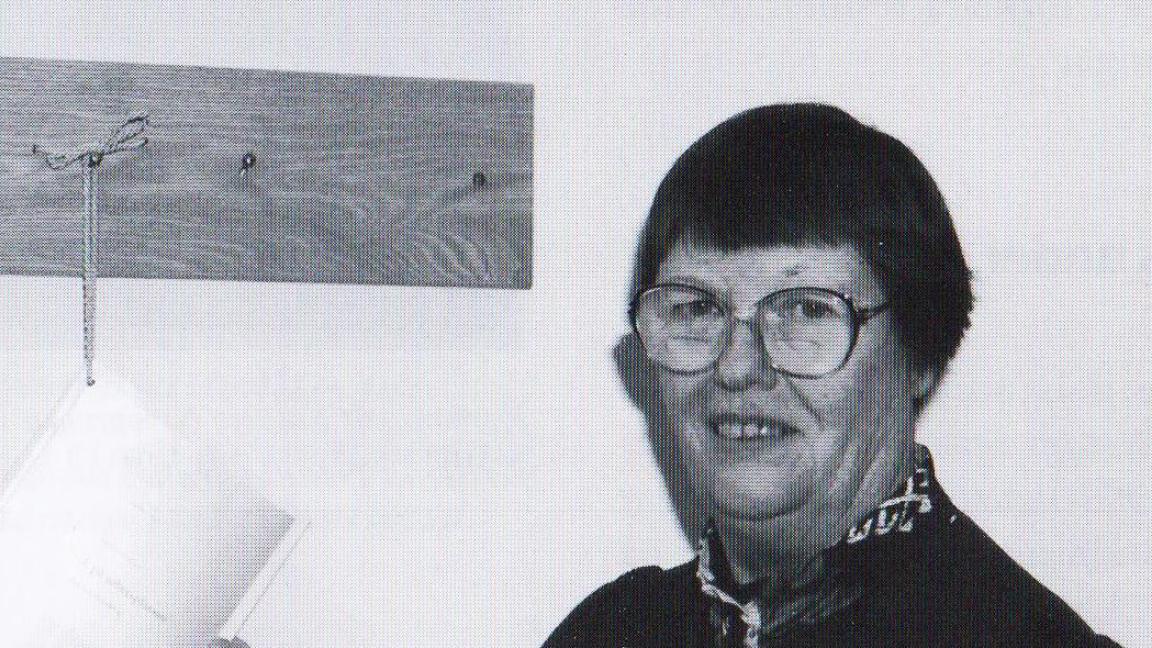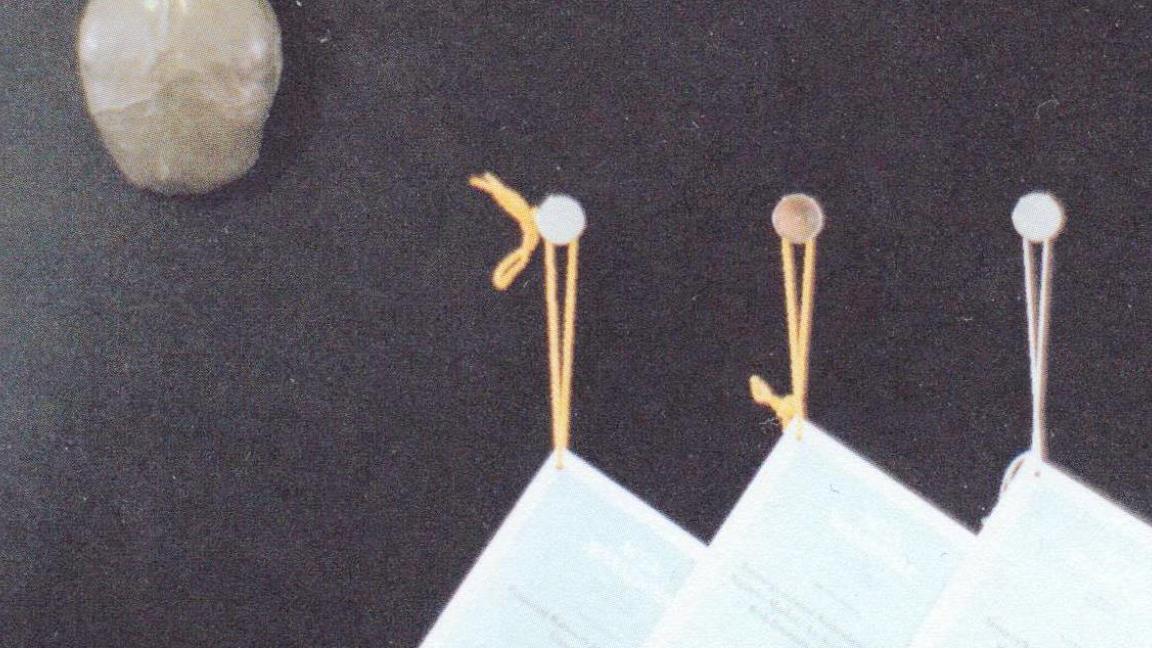Academic traditions – why do you nail a dissertation?
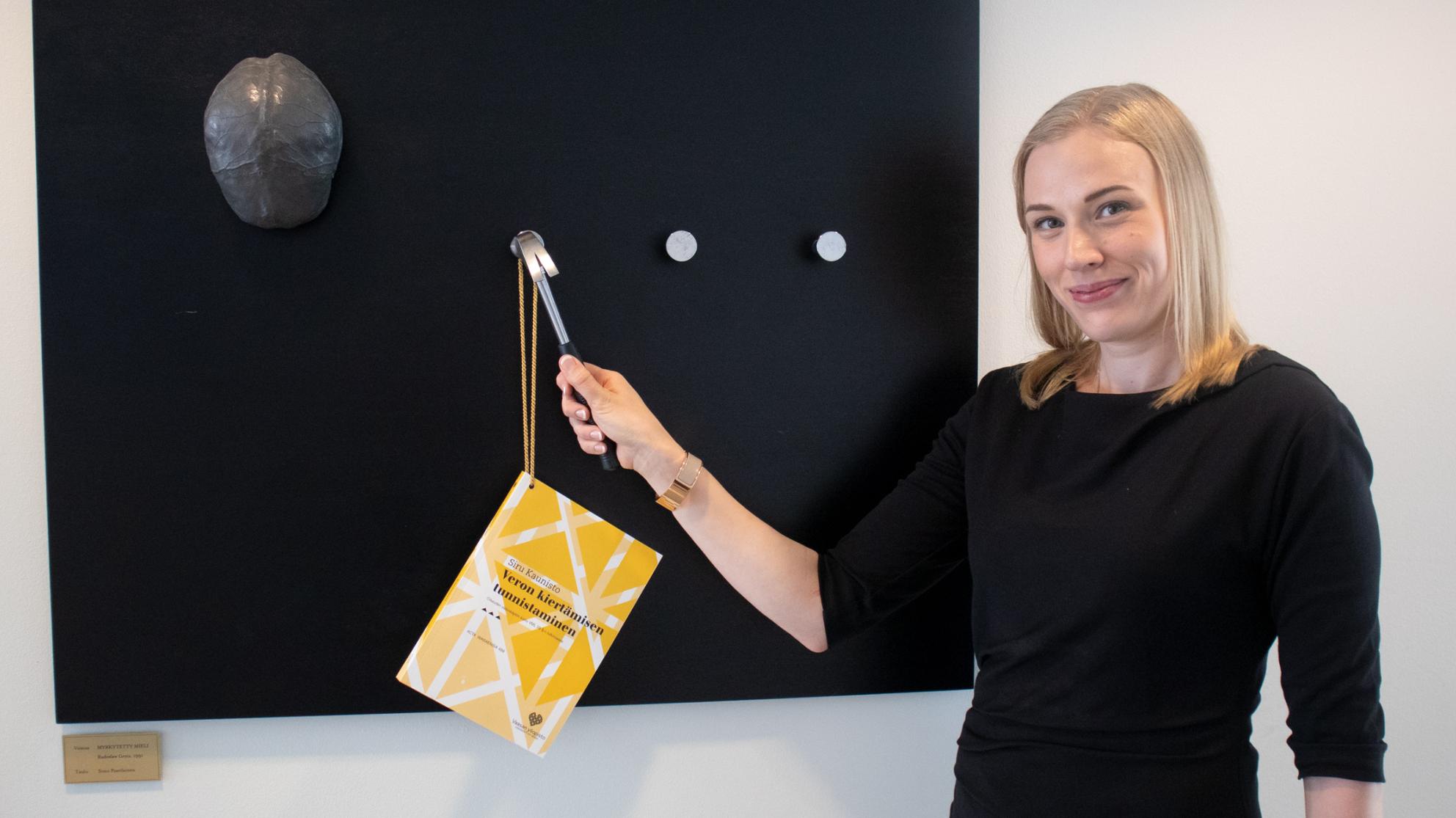
Niklas Lundström, coordinator from the Graduate School of the University of Vaasa, explains the tradition.
– With the nailing ceremony, you make a new dissertation available to everyone before the public defence. Today, dissertations are also published online on the Osuva database, but the tradition of nailing a physical copy still lives in the everyday life of our university.
Professors, researchers, doctoral students and the dean of the school are often invited to attend the ceremony. Some doctoral candidates invite their family too.
At the University of Vaasa, the custodians prepare a copy of the dissertation for nailing by punching holes to one corner of it to make a so-called nailing copy which then gets a string attached to it.
Usually, the supervisor and the doctoral candidate both give short speeches at the nailing ceremony.
The nailing ceremony usually takes place at noon exactly ten days before the public defence. During the covid pandemic when the campus was closed, nailing ceremonies were not held. Instead, the custodians hung the physical copies of dissertations on the wall. In some cases, only the doctoral candidate and their supervisor were present and others were able to follow the ceremony live online.
The history of the nailing ceremony at the University of Vaasa
Ilkka Virtanen, professor emeritus and former rector of the university, remembers the origin of the nailing tradition.
– It is my strong impression that there was no nailing or public display of dissertations when the university was located on Raastuvankatu street in the city centre. The public had the opportunity to get to know the dissertation before the public defence by studying it in the registry. Some copies were also there to be distributed to those interested.
When the university moved to Palosaari, Virtanen had a hand in how the nailing tradition was born.
– The background was the tradition of the University of Turku (where Virtanen himself did his doctoral degree), in which copies of dissertations had to be delivered to different parties. Two copies were delivered to the main library, and one of the books was a so-called "string piece” which was hung from a nail on the wall.
The nailing of dissertations was begun right after the move. By November 1995, it was already called a tradition.
– The actual nailing when hanging up a copy may well have been our own innovation. For example, Tapio Silvennoinen, the chief custodian, was enthusiastically involved in the project. He acquired a special hammer for this purpose and was there at least in the beginning to personally hit the nail in a symbolic manner. Some sort of a Lutheran spirit of nailing the theses was involved.
The current Dissertationes board was introduced sometime in early 1996.
– Unfortunately, I don't remember the process of acquiring the board. I guess it was somehow related to the acquisition of art to the second-floor corridor of Tervahovi. The architect, Paavilainen, was involved in the project. He had a strong opinion on what you can put on the walls and what not.
